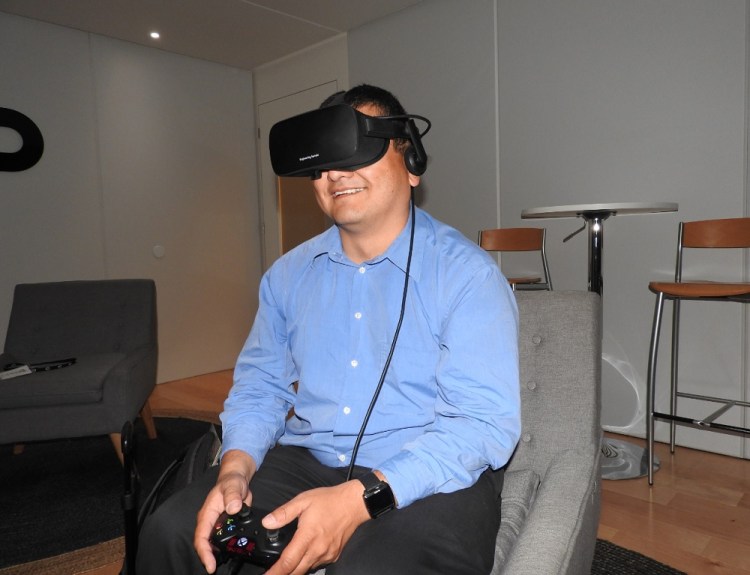Nintendo is the only major console manufacturer that doesn’t have some sort of augmented or virtual reality device that we know about, and now some of the company’s top names are starting to express some of the reasons why that is.
During a June 26 meeting with investors, Mario creator and Nintendo creative director Shigeru Miyamoto explained that his team wanted to focus on Wii U and 3DS software that is coming out in the near future. He pointed out that this is in opposition to other publishers, like Sony and Microsoft, that are a bit more focused on games that may not come out for a long while or head-mounted displays that people have to try to understand.
“I got the general impression that they were showcasing not only the products for this year but also many products for next year or the year after and, because of that, introductions for many of their software titles were done visually, not with playable demos,” Miyamoto told an assembled crowd of investors. “Also, many demonstrations for virtual-reality devices have been conducted at recent trade shows, and at this year’s E3, I noticed a number of dream-like demonstrations for which the schedule and format for commercialization are unknown.”
Put plainly, Miyamoto is just one of many people that doesn’t understand how Sony, Microsoft, and Oculus plan to convince people to pay money for experiences that won’t translate well in a television commercial.
Beyond that, the Mario designer thinks that virtual reality games are still a long way off and pose other issues as well.
“The current software for these virtual reality devices cannot be played simultaneously by a number of people,” said Miyamoto. “And since it is generally expected that the development for the applicable software for a high-performance device will take two to three years, there were a number of visual demonstrations for virtual reality devices.”
This is one of the reasons Nintendo is confident about what it showed at E3. It didn’t have a new peripheral or a stellar lineup of software that it’ll release in 2017 and 2018, but it did have a booth filled with lots of playable demos for products that will ship by early 2016.
But at the same time, Miyamoto’s take on virtual reality is already starting to feel outdated. Facebook’s Oculus spent much of its time at E3 showing off its Oculus Touch controllers in a two-player demo where people in different places are able to interact with objects and each other in a virtual room.
And while virtual reality definitely has a hurdle to overcome when it comes to showing how it works to the public, it’s not an impossible task. Sony even has experience creating pop-up demo areas in malls and other gathering places when it launched the PlayStation Vita, and it could do the same here. Microsoft, meanwhile, is already astonishing consumers with its HoloLens augmented reality, which actually looks even better on video than it does in person.
So while Miyamoto may not understand how Sony, Oculus, and the rest plan to sell their fancy new helmets, he better not expect them to never figure it out.
VentureBeat's mission is to be a digital town square for technical decision-makers to gain knowledge about transformative enterprise technology and transact. Learn More

